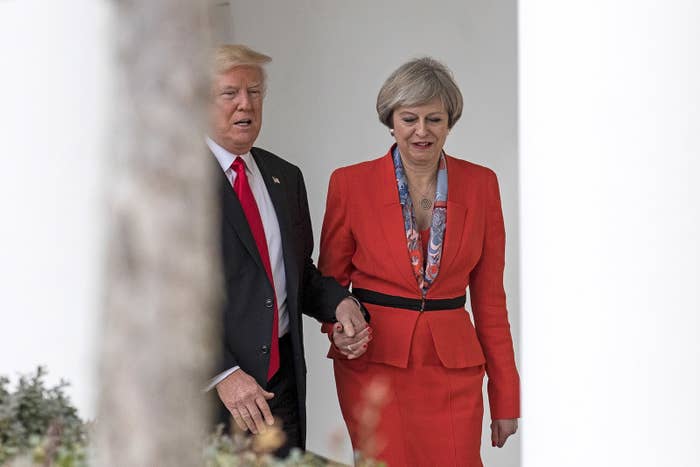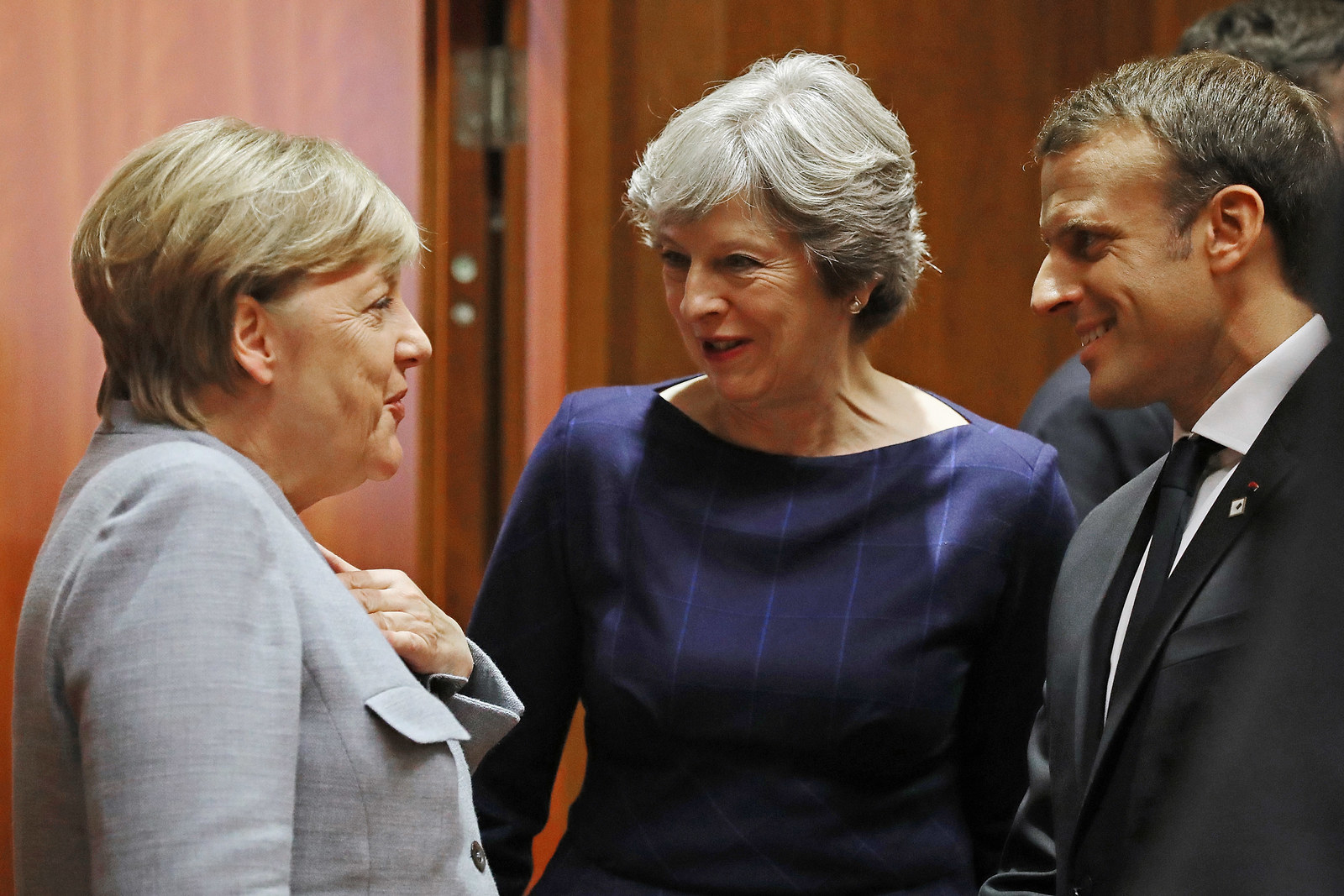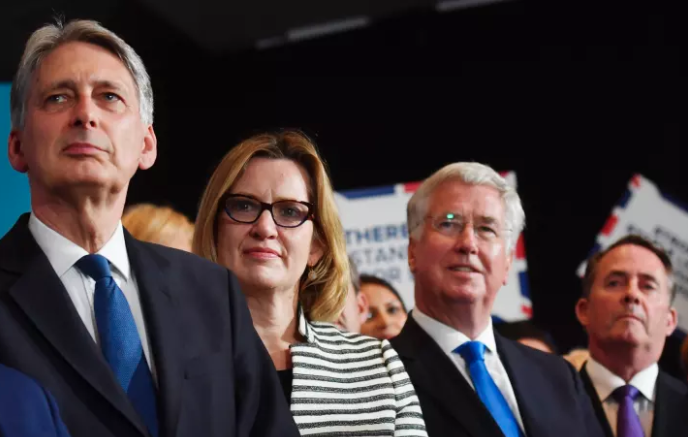2017 began with Theresa May and Donald Trump holding hands at the White House, and some 6,200 kilometres away, a nervous European Union. The year ended with the UK boxed into a Brexit process over which it now has little control.

The year kicked off with a number of EU member states concerned that May could put aside longstanding British foreign policy principles in her attempts to foster a special relationship with Trump, adding a layer of nervousness to the impending Brexit talks. The US president’s shadow loomed large when the remaining member states, the EU27, met in Malta in February.
Weeks before May set in motion the two-year countdown to Britain’s departure from the European Union, the EU’s approach to the talks was clear to anyone who wasn't too busy whistling – and pretty much anticipated, step-by-step, how the EU27 wanted the first phase of the negotiations to play out.
As part of the Brexit process, the UK will have to disentangle itself from four decades of various laws, regulations, and institutions. It will be a staggeringly difficult task, affecting virtually every area of the economy and society.
Resolving any one of these challenges would, under normal circumstances, be difficult and politically fraught. Resolving them all simultaneously, while in parallel negotiating a new relationship, is an undertaking on a scale like few that have confronted the British government in the past.
With the arrival of spring, the EU27 shored up their unity and toughened their negotiating stance. The EU’s negotiating principles are worth rereading over the holidays: They will continue to underpin the EU’s approach as the two sides negotiate the terms of transitional arrangements and their future relationship next year.
Senior Brexiteers have long argued that Germany, keen to sell cars to Britons, would be malleable to the UK’s demands. In reality, Angela Merkel’s government has been among the firmest member states in standing up for the EU’s negotiating principles and the integrity of the single market.
"The UK is not leaving Europe, but Britain will not be in the EU, and the EU is the priority," a senior government official in Berlin told BuzzFeed News back in April.
Berlin’s approach to Brexit has steadfastly remained anchored to that principle.
Halfway through the year, May called an election with the aim of increasing her majority and strengthening her hand in Brussels. She went into the vote on the front foot, 20 points ahead in the polls and accusing the EU and Europe's governments of threatening Britain in order to influence the outcome.
But, the election didn’t quite go to plan. The unsatisfactory result fuelled suggestions that the UK could seek a softer Brexit – but there was, and still is, little agreement on what that might actually mean.
Just before the general election, the Brexit secretary, David Davis, predicted that a debate over how to timetable the talks would be the “row of the summer”.
A few weeks later, and with summer still days away, he agreed to the sequenced approach set out by the EU’s negotiating stance on the opening day of talks.
The negotiation’s timetable isn’t the only thing that didn’t quite go as Davis predicted.
Pro tip: Take any suggestions of rows in 2018 with a pinch of salt.
May’s government has made clear its intention to replicate the EU's existing trade deals with more than 50 countries around the world, as well as dozens of other trade arrangements. But, as BuzzFeed News revealed in August, the government doesn’t have a contingency plan in place should it prove unable to do so, or in case it simply runs out of time.
EU officials have also suggested that if Britain wants to retain temporary access to these trade deals, it would need to keep existing customs arrangements in place.
This issue is likely to become one of the main talking points of 2018 as the UK looks to strike a difficult balance between keeping in place the trade relationships it has through EU membership while concluding new deals with other countries as part of its aspirations for a global Britain.
Following months of often gruelling negotiations and drama, the EU’s remaining 27 member states took a few minutes at a mid-December summit in Brussels to declare that progress was sufficient to move on to the next phase of talks.
At the same meeting, the EU27 set out new guidelines for a transitional phase after Brexit, which make clear that the UK will temporarily remain in the customs union and single market (with all four freedoms – of movement of goods, services, people, and capital) for a period of around two years, and will need to comply with all existing EU “regulatory, budgetary, supervisory, judiciary and enforcement instruments and structures”, including the European Court of Justice.
At the same time, Britain will lose its place within the EU’s institutions and at the tables where decisions are made.
The negotiating guidelines for the second phase of talks are clear in the path they set: The next round of negotiations will focus primarily on transitional arrangements. These will form part of a withdrawal agreement that in turn will be accompanied by a political declaration – not a trade deal – on the scope of the future relationship. And talks about the declaration’s content will begin only once the UK spells out what it wants from its post-Brexit relationship with the EU.
One challenge is that May's cabinet has yet to land on a common position, and is divided over how closely aligned to the EU Britain should be in future. Finding an agreement at home will be one of the prime minister's very first tasks after the Christmas break.
A head of government told BuzzFeed News earlier this month: “The negotiations are in London, not in Brussels.”









